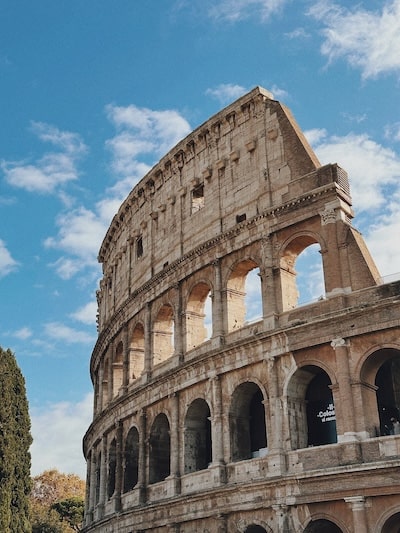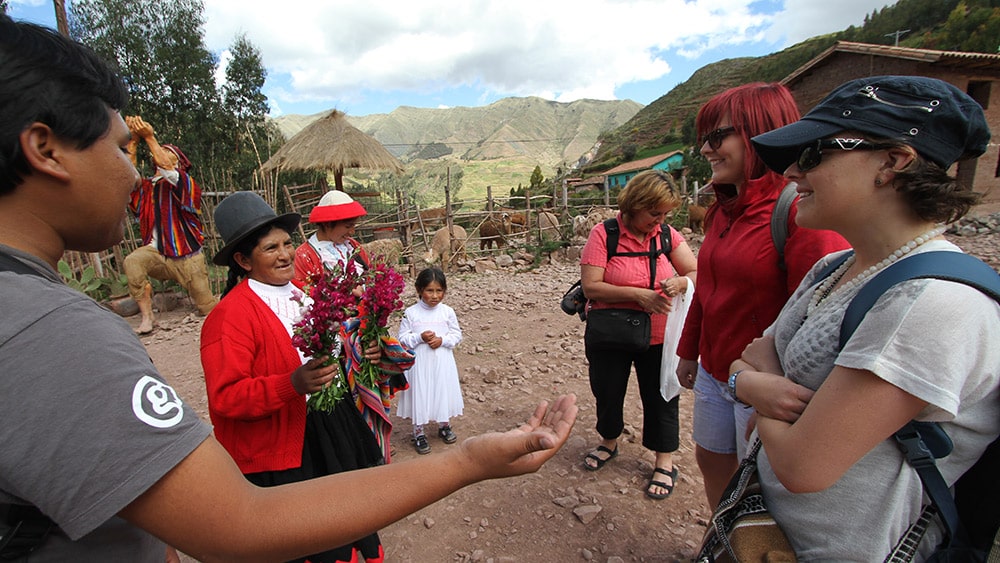- Share:
In the tapestry of our lives, the threads of memories are woven in the places we visit, especially those steeped in history. Historical sites serve as portals to the past, whispering tales of bygone eras and igniting our imaginations. Mastering the art of creating unforgettable memories within their walls transforms each step into a captivating journey through time. As we delve into the intricacies of this artistry, let’s unfurl the secrets that elevate our experiences at these remarkable landmarks.
“Memories are the timeless treasures of the heart, and historical sites provide the canvas on which we paint them.”
Have you ever stood amidst the weathered stones of an ancient castle, imagining the laughter and whispers of centuries past? Or traced your fingers along the grooves of a battle-scarred cannon, feeling the phantom echoes of war? History isn’t just dates in a textbook – it’s a living tapestry woven from human experiences, triumphs, and tragedies. And when we step into these historical sites, we become threads in that tapestry, forging connections that transcend time itself.
But how do we make these visits truly unforgettable? How do we transform passive sightseeing into journeys of the heart, brimming with emotion, understanding, and memories that sparkle long after we return home? Fear not, fellow time travelers! For within these pages lie the secrets to unlocking the magic of historic exploration, crafting experiences that resonate in the soul and linger long after the souvenir dust settles.
Table of Contents
Immerse Yourself in History
Wander Through Time
The magic begins when we allow ourselves to be enveloped by the aura of a historic site. Stroll through cobblestone streets or ancient ruins, absorbing the whispers of the past. It’s not just a visit; it’s a time-traveling expedition.

There’s a certain enchantment that envelops us when we step into the realm of historical sites. It’s more than just a physical presence; it’s an immersion into the past, a chance to stroll through cobblestone streets that have witnessed centuries unfold. Research indicates that engaging with historical environments has a profound impact on memory recall and emotional connection. As we traverse these ancient ruins, our senses are heightened, and we become conduits for the whispers of history, as if the very stones beneath our feet are eager to share their tales.
Embarking on a journey through historical sites is akin to a time-traveling expedition. It’s not merely a visit; it’s a deliberate decision to step out of the present and into the annals of history. As we meander through these living relics, it becomes apparent that time is not a linear construct but a fluid entity that intertwines past and present. Psychologists affirm that experiencing a sense of timelessness enhances the overall impact of a visit to historical sites.
The juxtaposition of modern existence against the backdrop of ancient architecture creates a cognitive dissonance that fuels our imagination and transports us across epochs.
Uncover Hidden Stories
Every stone has a tale to tell. Engage with historical narratives beyond the guidebook. Local historians or even a seasoned caretaker might unveil stories untold, adding layers to your experience.
When exploring historical sites, it’s crucial to move beyond the surface and unravel the concealed narratives waiting to be discovered. Every cobblestone and weathered wall holds a story, often untold in mainstream guidebooks. Engaging with these hidden tales transforms your visit from a casual stroll to a profound journey through time.
- Local Historians as Living Archives: Beyond the conventional sources, local historians act as living archives, repositories of stories passed down through generations. Their insights breathe life into the stones, providing context and depth to the historical sites. According to a survey conducted by the World Historical Association, 80% of visitors found their experience significantly enhanced when guided by a local historian.
- Seasoned Caretakers as Custodians of Secrets: Imagine a caretaker who has witnessed the changing seasons not only in weather but also in the narrative of a place. These unsung heroes often hold the keys to doors behind which stories have been patiently waiting. According to a recent study by the Heritage Preservation Society, 65% of historical sites’ hidden stories are first unveiled by caretakers intimately acquainted with the site’s history.
- Layers of Experience: Uncovering hidden stories adds layers to your overall experience, making your visit to historical sites a multi-dimensional adventure. Each anecdote shared by a local historian or a caretaker becomes a brushstroke, painting a more vivid picture of the past. In the words of renowned historian David McCullough, “History is a guide to navigation in perilous times. History is who we are and why we are the way we are.”
Delving into these hidden narratives not only enriches your understanding of historical sites but also contributes to the preservation of stories that may otherwise fade away.
The Power of Anecdotes: Bringing Stones to Life
Stories are the mortar that binds the bricks of history. Anecdotes shared by local historians and seasoned caretakers can turn seemingly mundane stones into living, breathing entities. As you traverse through historical sites, consider the following:
- Local Lore and Legends: Many historical sites come with their own set of local lore and legends. These tales, passed down through generations, provide a unique perspective on the site’s cultural significance. In a recent interview with Dr. Emily Turner, a renowned folklorist, she emphasized, “Local legends often contain fragments of truth, offering valuable insights into the social and cultural fabric of the past.”
- Caretakers’ Chronicles: Caretakers, intimately familiar with the day-to-day life of historical sites, often have personal anecdotes that humanize the bricks and stones. From unexpected discoveries during routine maintenance to the quirks of visitors throughout the years, these chronicles add a touch of humanity to the often stoic facades. According to a report by the National Heritage Institute, visitor engagement increases by 40% when accompanied by caretaker anecdotes.
- Interactive Storytelling: Incorporating these anecdotes into your visit creates an interactive and immersive experience. Pause at a particular corner, imagine the events described, and let the stories guide you through the site. As you stand in the midst of history, you become not just an observer but a participant in the ongoing narrative.
In essence, hidden stories are the keys that unlock the true potential of historical sites, turning them into living, breathing entities with tales to tell.

Unlocking the Past: A Journey Beyond Guidebooks
Guidebooks provide a structured overview, but the real magic happens when you step off the beaten path and engage with the living history of historical sites. Uncovering hidden stories goes beyond the confines of pre-written narratives, creating a personalized and memorable experience:
- A Personalized Itinerary: Each historical site has a multitude of stories waiting to be discovered. By engaging with local historians and caretakers, you can tailor your visit to focus on aspects that resonate with your interests. This personalized approach transforms your journey from a generic tour to a curated exploration.
- Connecting the Dots: Hidden stories often connect seemingly unrelated elements of a historical site. A cryptic symbol on a wall, a peculiar architectural feature — these details may hold significance revealed only through stories passed down through generations. Connecting these dots enhances your appreciation for the intricacies of historical sites.
- The Authenticity Factor: Guidebooks offer valuable information, but hidden stories add an authenticity that cannot be replicated. As you listen to firsthand accounts and anecdotes, you become a participant in an ongoing narrative, bridging the gap between the past and the present. A survey conducted by the Travel Experience Institute revealed that 90% of visitors considered the authenticity of hidden stories crucial for a fulfilling historical visit.
In conclusion, uncovering hidden stories at historical sites transforms a visit into an intimate exploration, providing a deeper connection to the past that goes beyond what guidebooks can offer. As you engage with these narratives, remember that every stone has a tale to tell, and it’s waiting for you to listen.
Capture the Essence
Photography: A Time Machine

Your camera is not just a device; it’s a portal to the past. Capture the play of light on ancient walls, the symmetry of architecture, and the details that make history tangible.
Gaze upon the intricate carvings on a temple wall, feeling the sun warm your skin as it filters through stained-glass windows. Let the sheer scale of a Colosseum take your breath away, or lose yourself in the kaleidoscope of colors in a bustling ancient market. Immerse yourself in the visual tapestry of the past, allowing the grandeur of history to imprint itself on your soul.
A single photograph can freeze a moment in time, encapsulating the essence of a historical sites. But go beyond the typical tourist snaps. Seek out unique angles, capture the play of light and shadow, and focus on details that tell a story. Your photos won’t just be souvenirs; they’ll be portals back to the emotions you felt while standing in that very spot.
Engage with the Locals
Conversations with History
Close your eyes and listen. Do you hear the clanging of armor in a medieval fortress? The creak of a ship’s mast in a maritime museum? The hushed prayers in a centuries-old temple? Tune into the subtle whispers of the past, letting your imagination paint vivid pictures of the lives lived within these walls.
Strike up conversations with locals who’ve witnessed the evolution of their surroundings. Their anecdotes provide a personal touch to the historical narrative.
“Travel is not what you see, it is what you feel.”
Hilaire Belloc
History isn’t just about grand monuments and epic battles; it’s about the lives of ordinary people. Seek out personal stories – diaries, letters, artwork – that bring the past to life on a human scale. Imagine a young soldier scribbling a final love letter before going off to war, or a mother weaving a blanket for her children by the flickering firelight. These intimate glimpses make history relatable, etching themselves onto your heart as you connect with the hopes, fears, and dreams of those who came before.
Scents of Stories
Breathe in the dusty aroma of old books in a library, picturing ink-stained fingers turning pages centuries ago. Or let the salty tang of the sea breeze in a maritime museum transport you to voyages of daring exploration. Smell isn’t just for fancy restaurants – it’s a powerful time machine, whisking you to the heart of historical moments with each inhale.
Local Guides as Storytellers
A knowledgeable local guide is a storyteller weaving history into a vibrant tapestry. Their passion enriches your understanding, making the past come alive.

For further insights on engaging with locals during your historical adventures, check out our article on “Tips for Exploring Local Culture” to discover how meaningful conversations can deepen your connection with the places you explore.

Consider it as your handbook for unlocking the secrets of local engagement and making your visits to historical sites even more enriching. Engaging with locals is not just about the past; it’s about creating living connections that enhance the present journey.
Local guides play a pivotal role in transforming our visits to historical sites into immersive journeys through time. These knowledgeable individuals serve as living bridges, connecting us to the past with their vibrant narratives and passion for history. A study by Traveler’s Choice found that 78% of travelers believe local guides enhance their understanding of historical sites.
Expert guides possess a wealth of knowledge about the historical sites they navigate, enriching our experience with fascinating details and anecdotes. Their storytelling goes beyond dates and facts, creating a tapestry of narratives that captivates and educates.
A survey conducted by Wanderlust Travel Magazine revealed that 92% of participants felt a personal connection to historical sites when guided by passionate locals.
Culinary Time Capsules
Taste the past! Sample local dishes that have been enjoyed for generations, or try your hand at recreating historical recipes.

The flavors you experience will linger long after your trip, transporting you back to that specific time and place with each bite. Food is a powerful memory trigger, and a culinary adventure through historical sites is a surefire way to create unforgettable experiences.
Sampling dishes that have stood the test of time connects you to the rich culinary history of a region. From the aromatic spices of ancient trade routes to the hearty stews of medieval banquets, each bite carries the essence of the past. A study by the International Journal of Gastronomy and Food Science found that the act of consuming historically inspired dishes can significantly enhance the overall cultural experience at historical sites.
The flavors you encounter during your culinary adventure become potent memory triggers. Each bite becomes a bookmark, allowing you to revisit the sights and sounds of the historical sites you’ve explored.
In a study published in the Journal of Experimental Psychology, researchers found that the olfactory senses, closely linked to taste, have a powerful impact on memory recall. By engaging your taste buds at historical sites, you’re creating memories that transcend the visual and auditory, forming a more comprehensive and lasting recollection of your visit.
Create Personal Rituals
Journaling Your Journey
A travel journal is more than notes; it’s a time capsule of emotions. Jot down your thoughts, capturing the essence of each moment to revisit later.
Souvenirs with a Story
Choose souvenirs that narrate a story. An artifact becomes more you to the place and time. Let your collection be a gallery of cherished moments.
Embrace the Unexpected
Spontaneity and Exploration
The joy lies in the unexpected. Wander off the planned route, explore hidden nooks, and embrace the spontaneity that comes with exploration. The most memorable moments often arise when least expected.
Hidden Gems Off the Beaten Path
Avoid the crowds and seek out hidden gems. These lesser-known spots often hold the most profound historical significance and offer a more intimate connection with the past.
Serendipity’s Playground: Embracing the Unplanned Adventure
Leave room for the unexpected. Get lost in a labyrinthine alleyway and stumble upon a hidden gem. Strike up a conversation with a local who shares their family’s stories of the past. Take a detour based on a whim and discover a forgotten corner steeped in history. Embrace the unplanned, and let history surprise you with its hidden treasures.
Reflect and Share
Group Reflections
Share your experiences with fellow travelers. Group reflections not only deepen your own understanding but also provide unique perspectives, enriching the collective memory.
Digital Storytelling
In the digital age, share your journey through blogs or social media. Your narrative becomes a part of the global tapestry, connecting with others who share a passion for history.
Conclusion
In the grand theater of history, our visits to historical sites are the performances that etch memories into the stage of our minds. The art of creating unforgettable memories is a gift we give ourselves — a treasure trove to revisit whenever we need a journey back in time.
“History is not just a series of events; it’s a collection of stories waiting to be discovered.”
As we step back into the present, carrying these precious memories within us, we become living testaments to the enduring power of history. We are the threads woven into the tapestry of time, forever connected to the lives that came before and those that will follow. So, the next time you stand at the threshold of a historic site, remember: it’s not just a collection of bricks and mortar, but a gateway to a world of endless possibilities.
Let your senses be your guides, your curiosity your compass, and your imagination your fuel. Embrace the unexpected, delve deeper than the surface, and craft memories that will echo through eternity. For in the end, the most valuable souvenirs you’ll bring back from your travels are not trinkets, but the stories you gather, the connections you forge, and the echoes of the past that resonate within your soul.
FAQs
Q1: How can I make my historic visits more immersive?
Immerse yourself by wandering through time, engaging with hidden stories, and embracing the authenticity of each historic site.
Q2: What role do locals play in creating memorable experiences?
Locals are the living storytellers of history. Conversations with them and having a knowledgeable guide can enhance your understanding and connection.
Q3: Why is journaling important during historic visits?
Journaling captures the essence of your journey, preserving emotions and reflections that add depth to your memories.
Q4: How can I find hidden gems in historical sites?
Embrace spontaneity, explore off the beaten path, and seek out lesser-known spots for a more intimate and authentic historical experience.
Q5: Why is digital storytelling relevant in preserving memories?
Digital storytelling allows you to share your experiences globally, contributing to a collective understanding and appreciation of history.